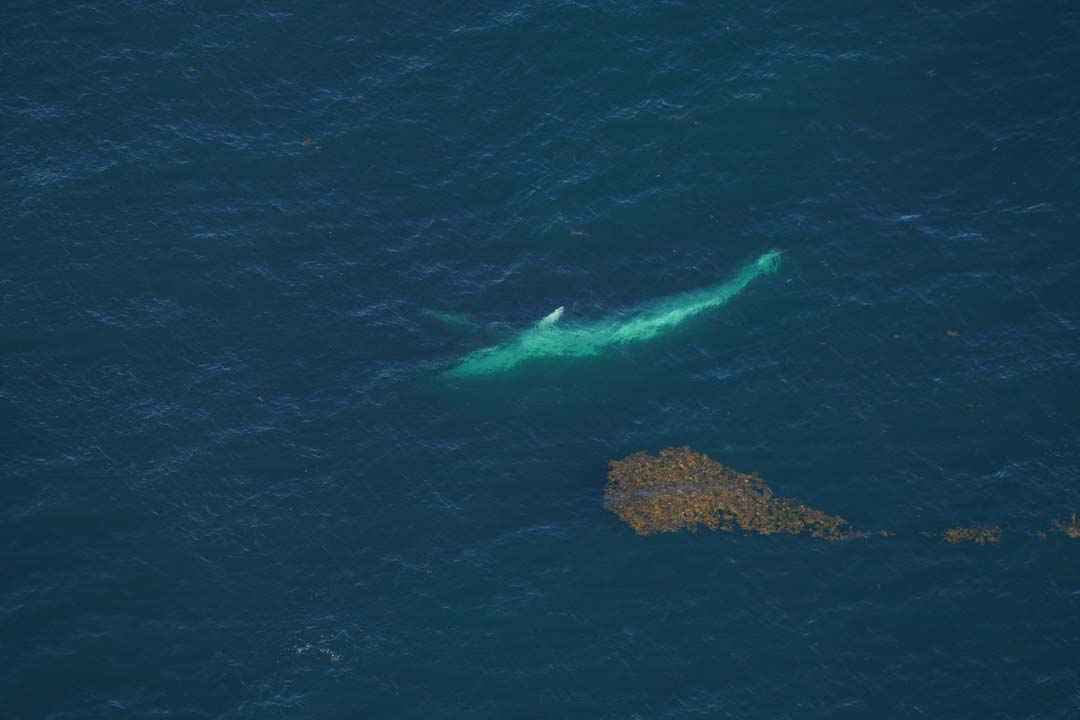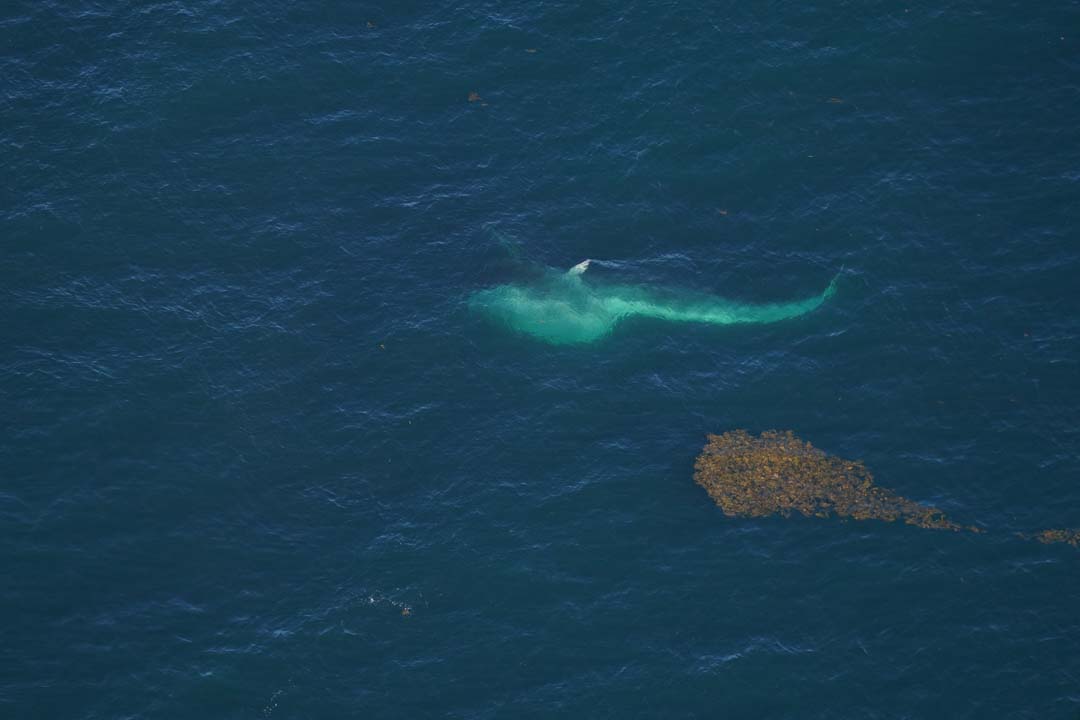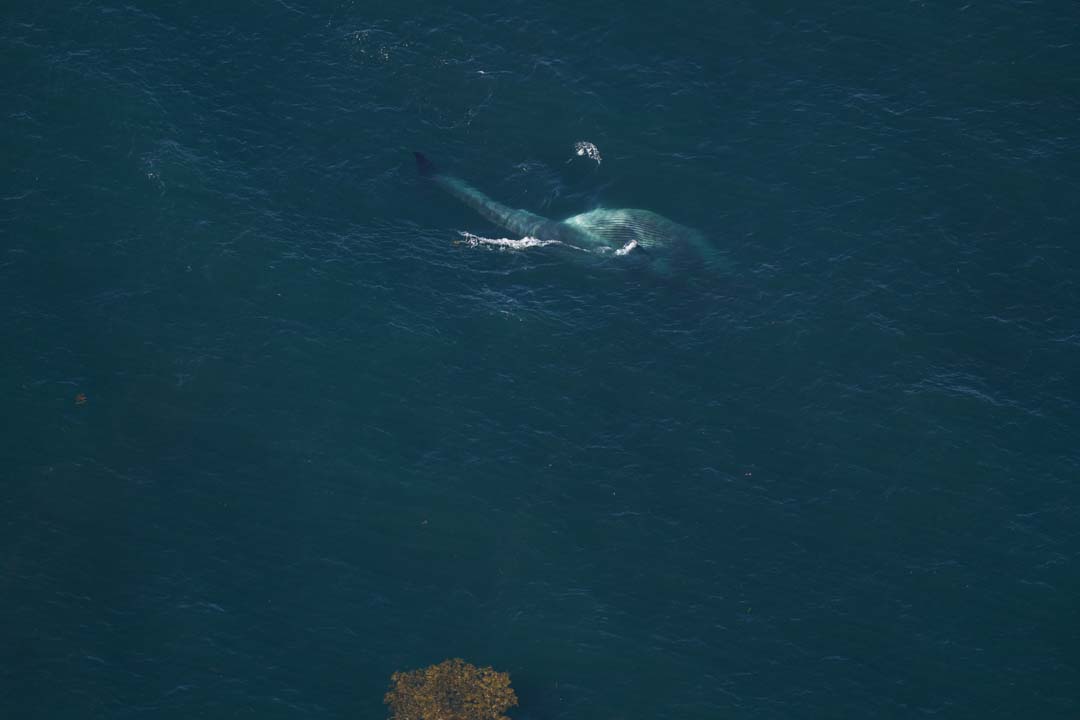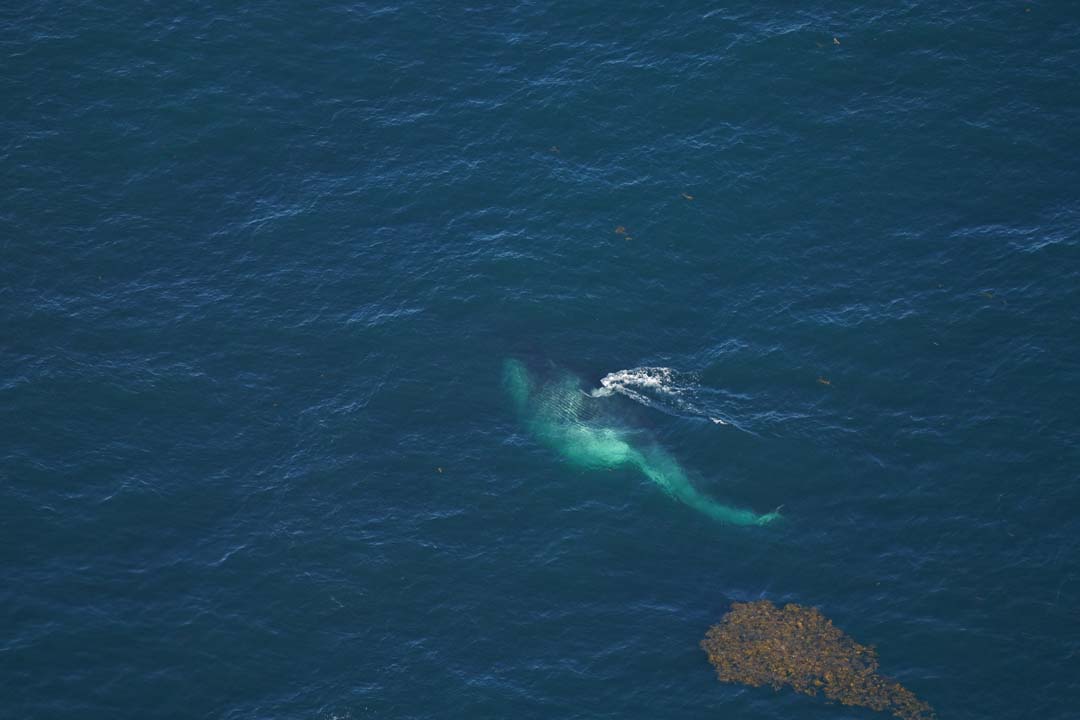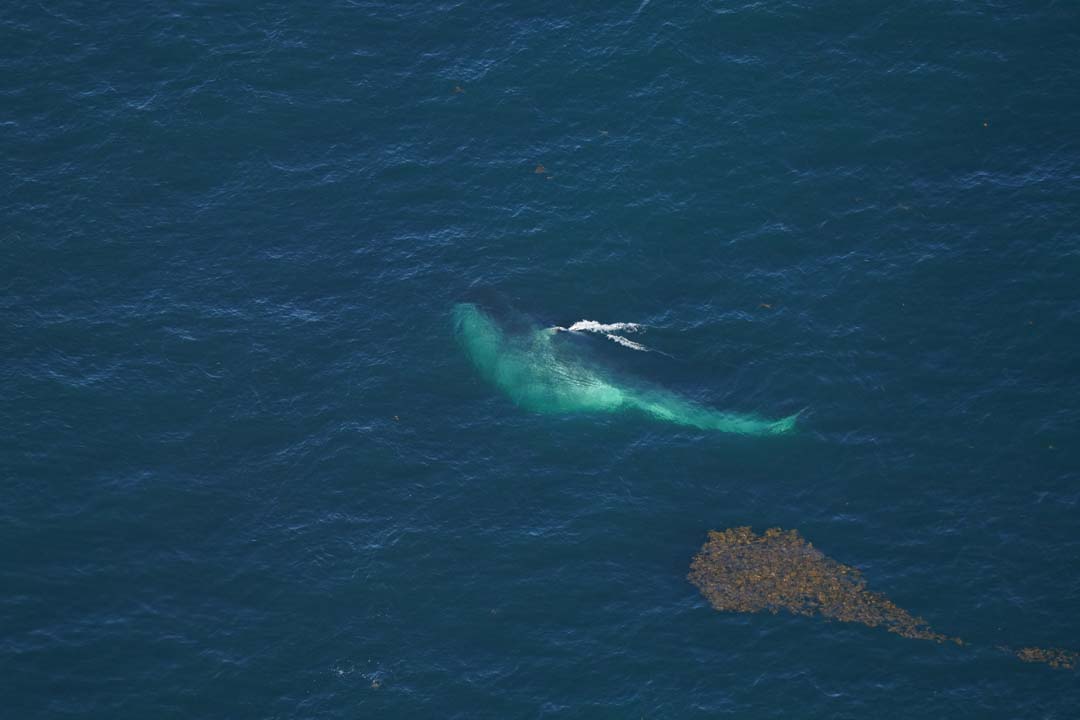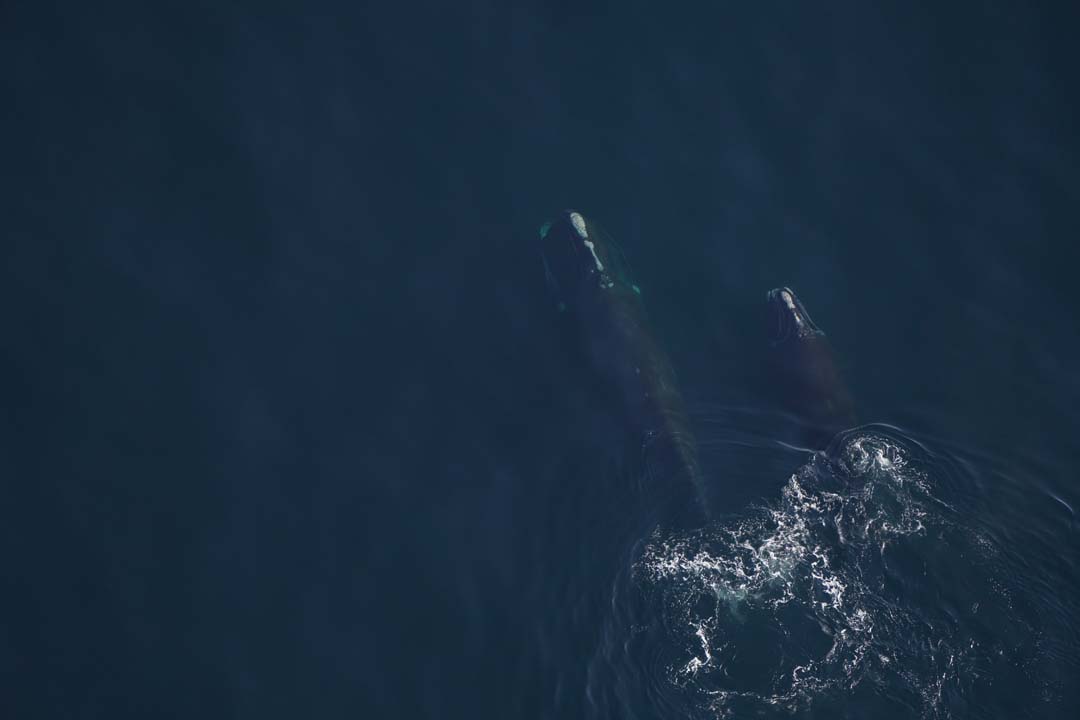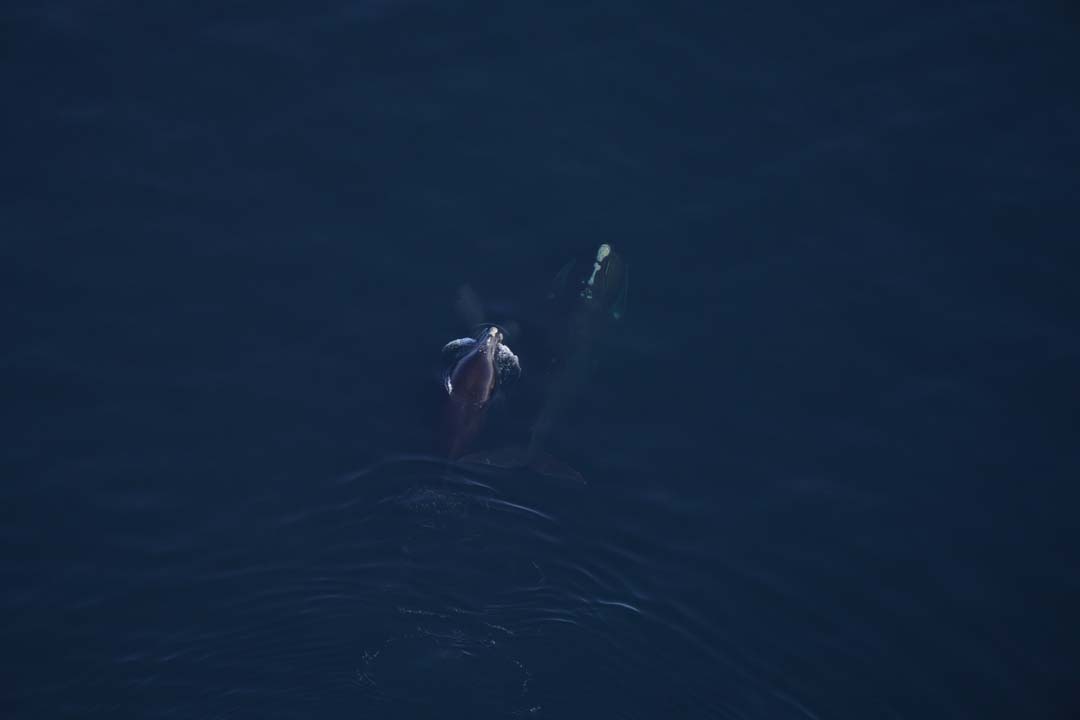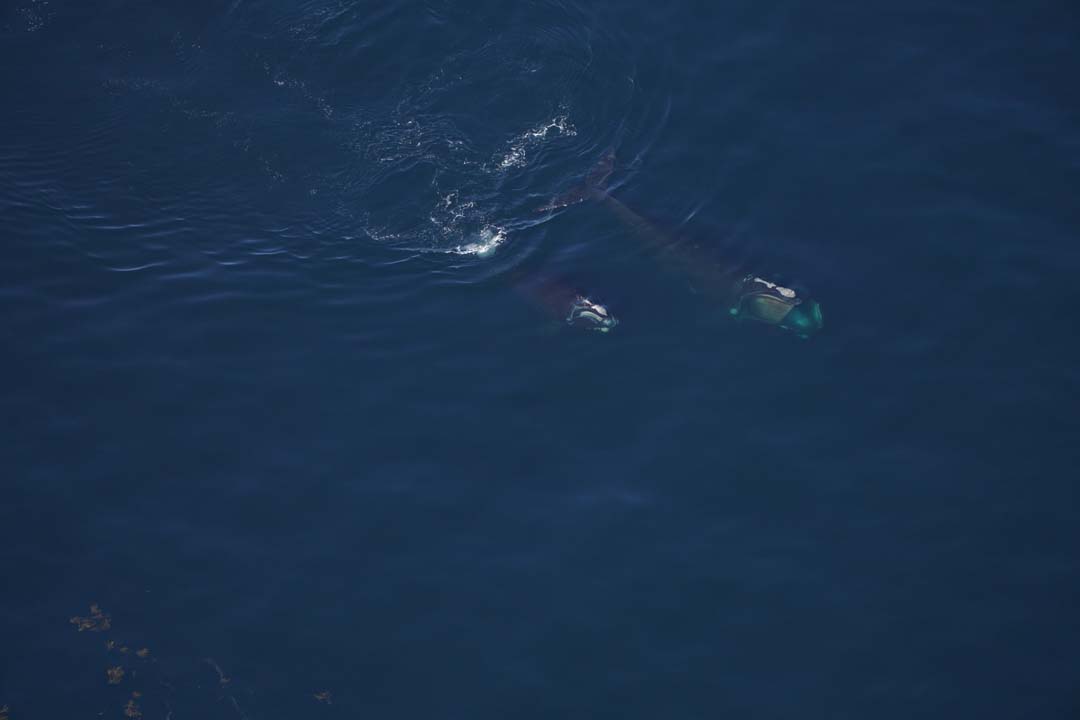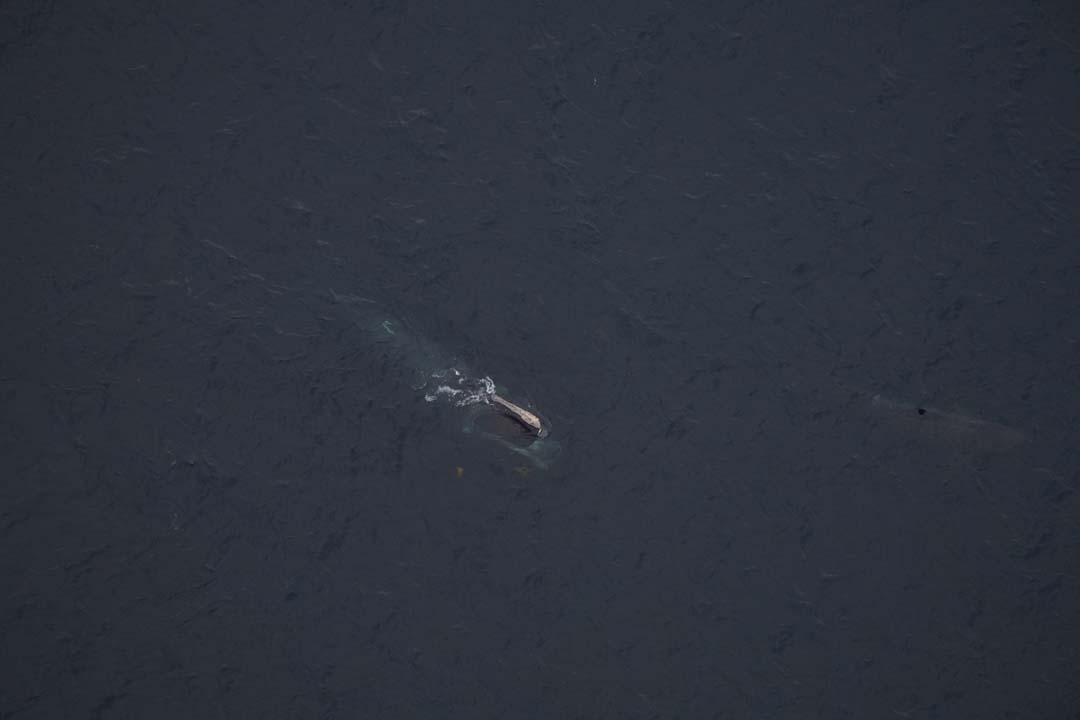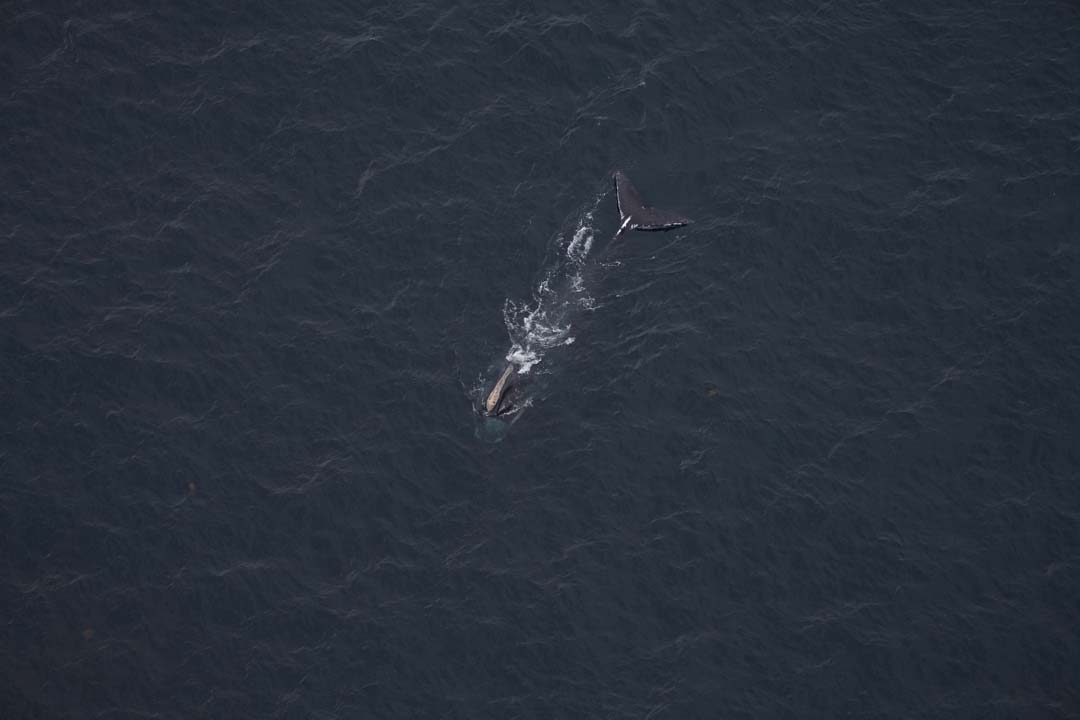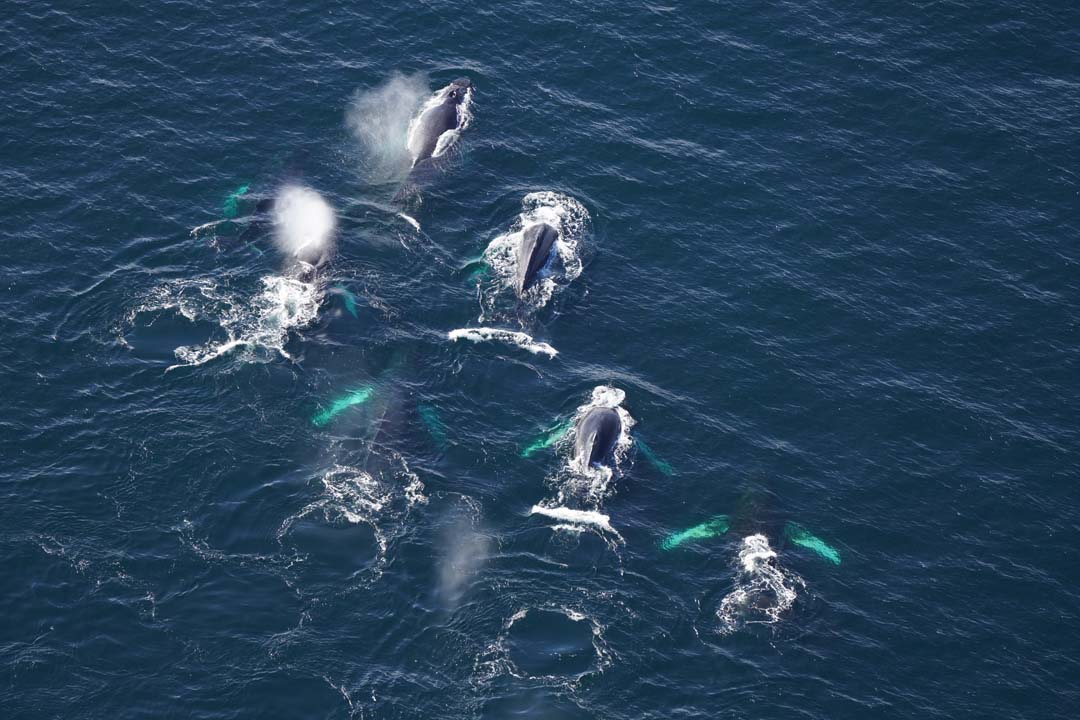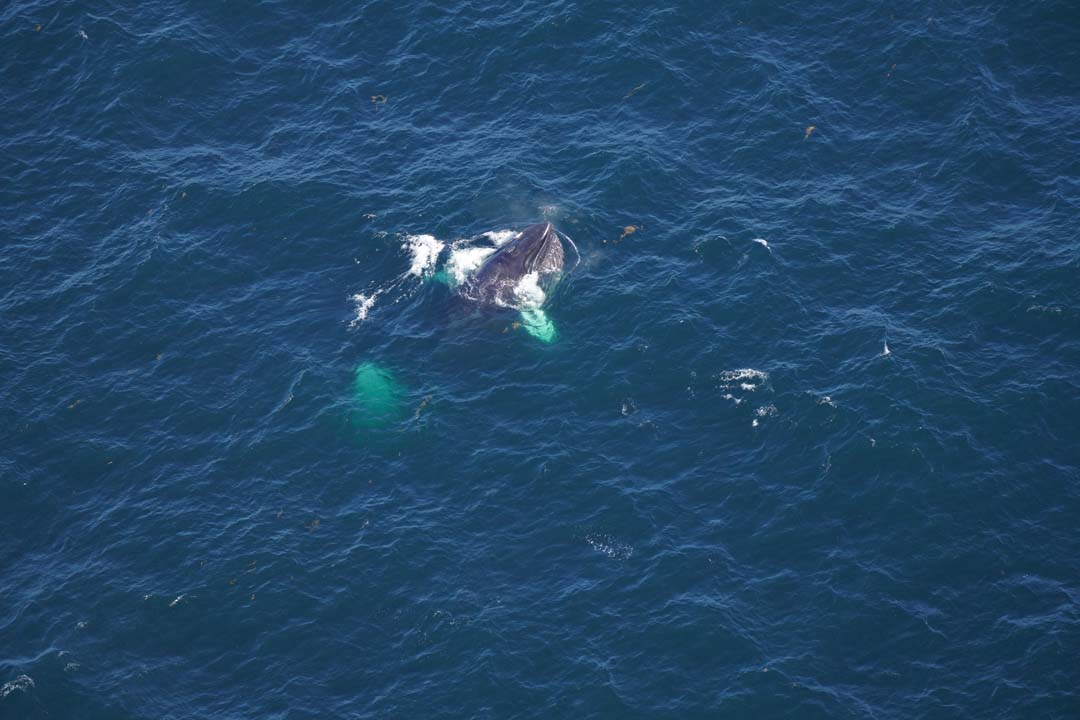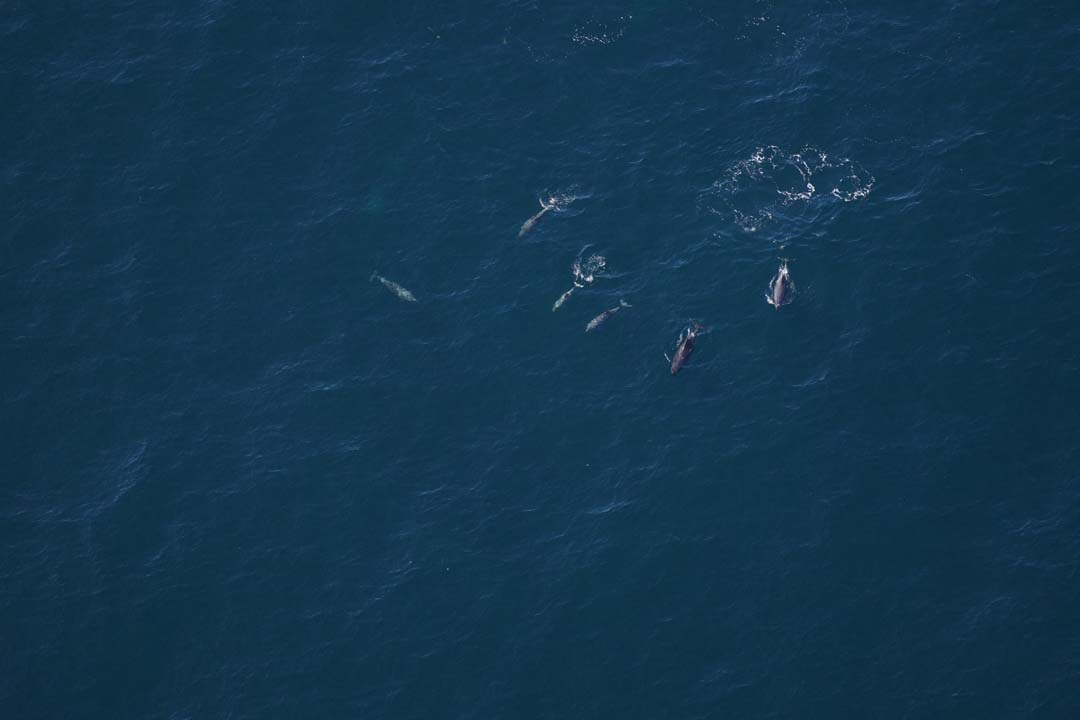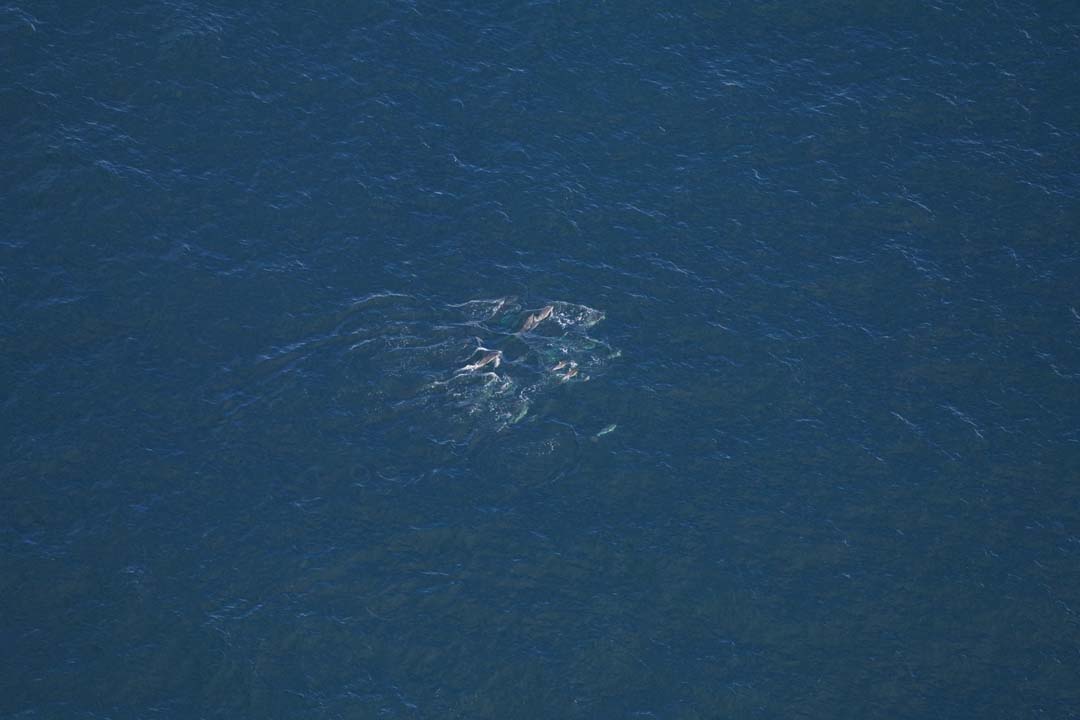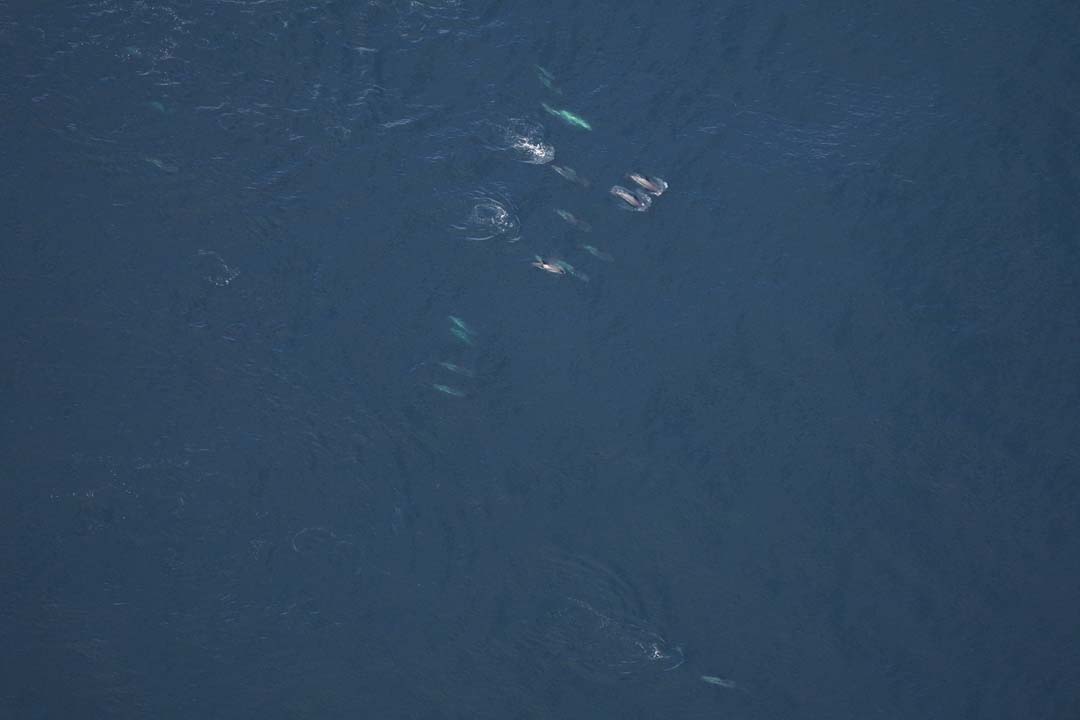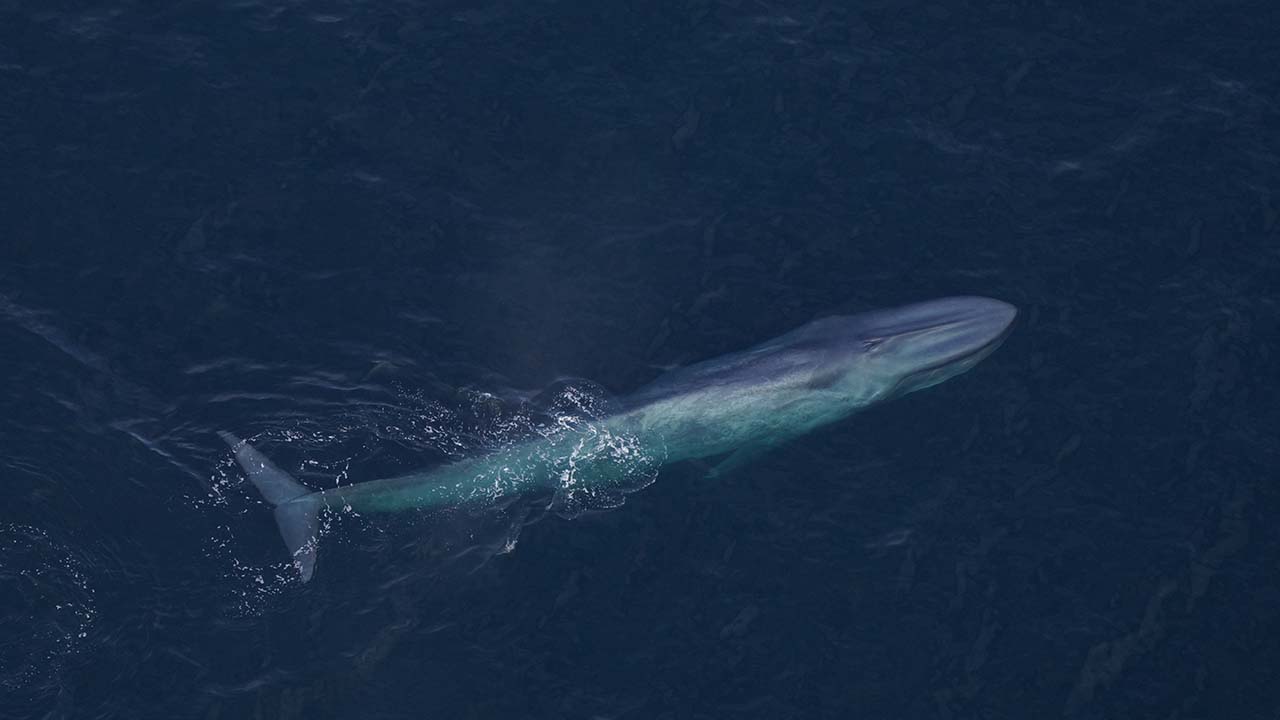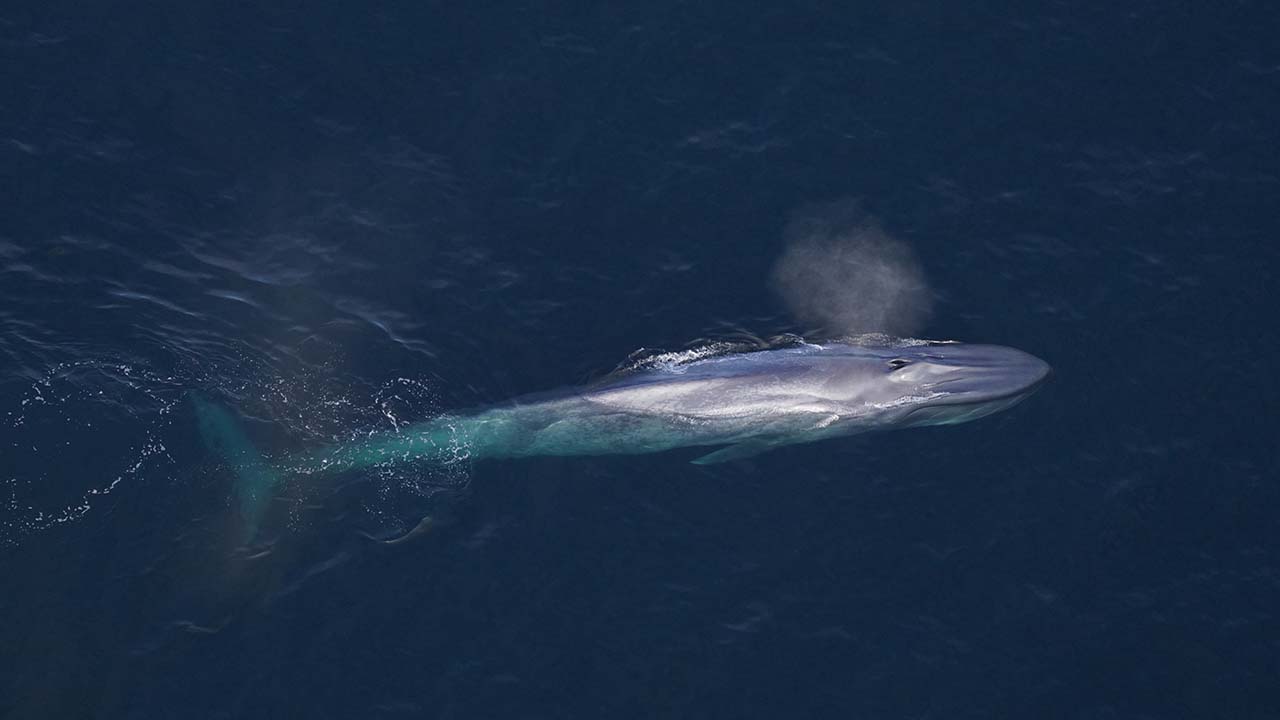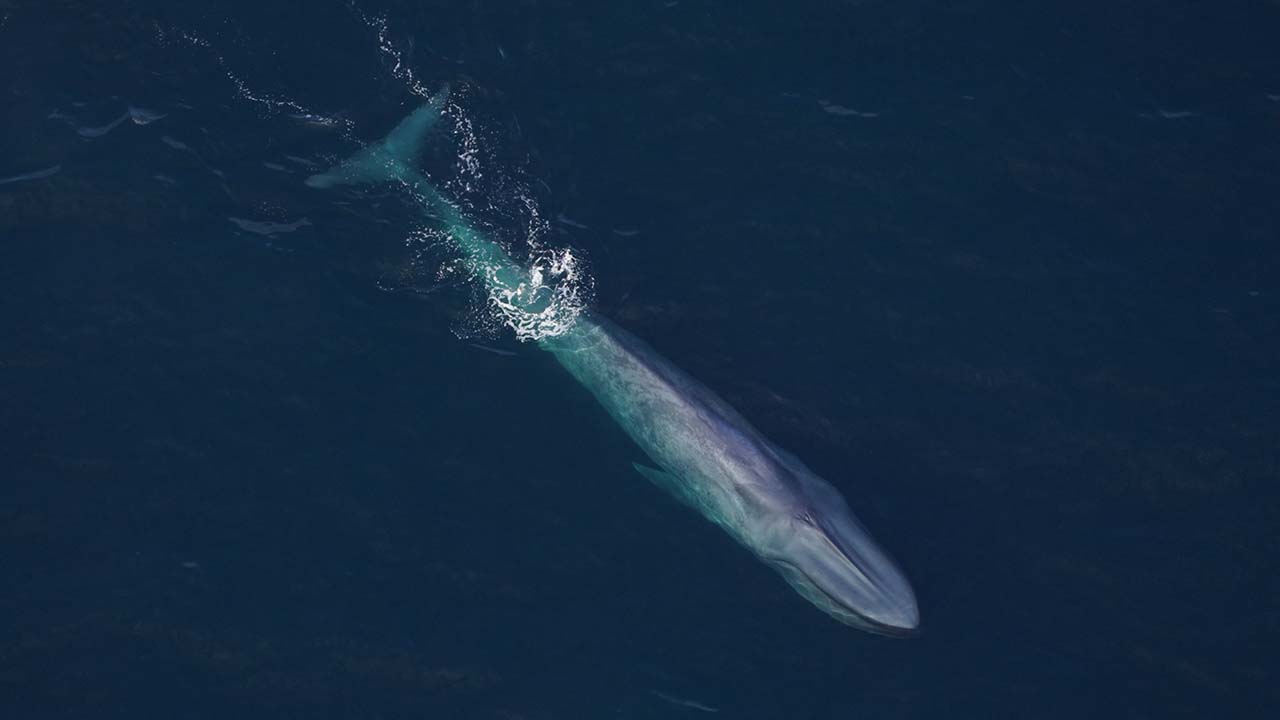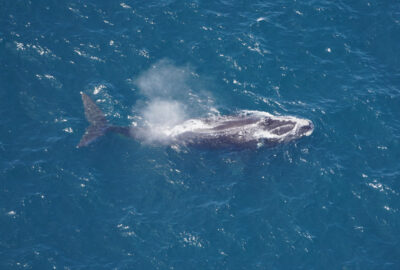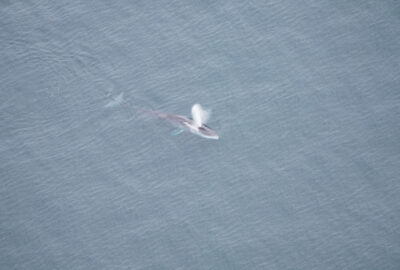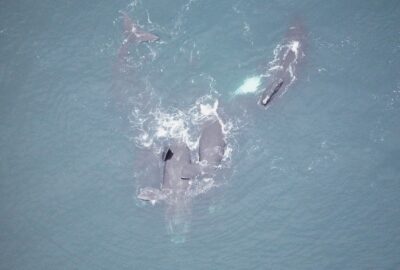Fall Feeding Frenzy: Aerial Survey Sightings from the Gulf of Maine
Our Anderson Cabot Center for Ocean Life scientists spotted a diverse array of marine mammals in the Gulf of Maine this season—including a right whale mom and calf.
By New England Aquarium on Thursday, November 16, 2023

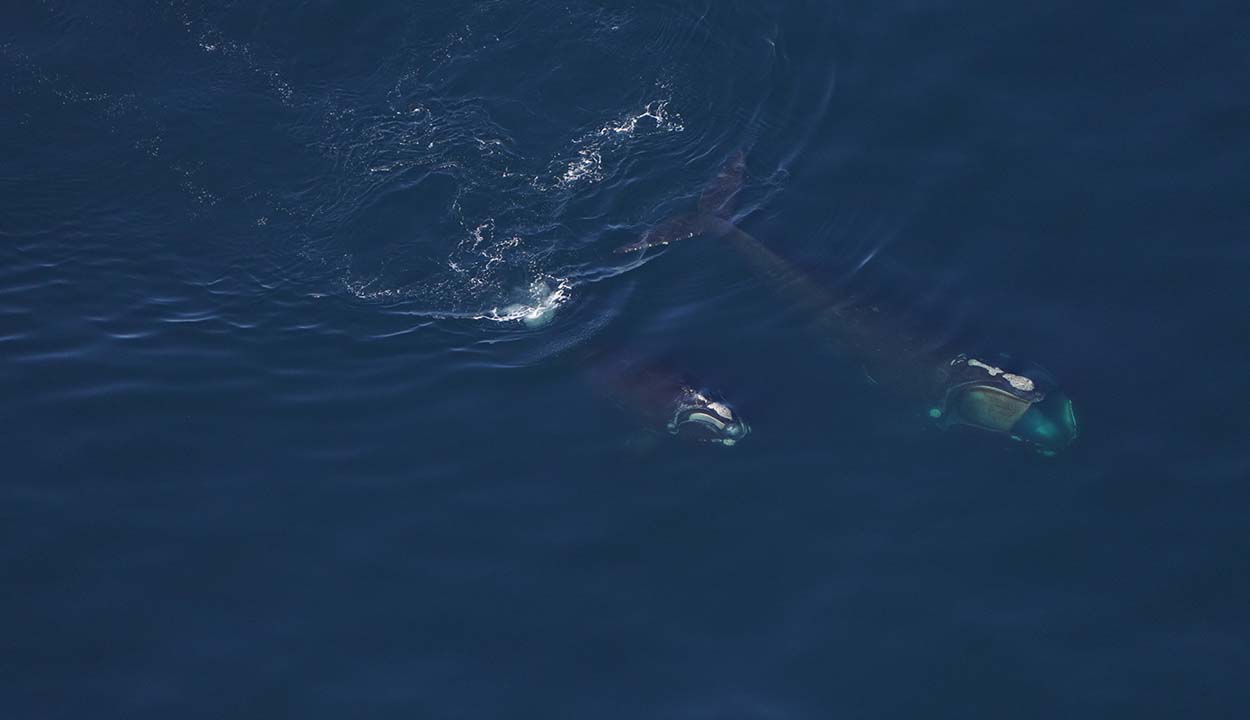
This fall, our aerial survey team at our Anderson Cabot Center for Ocean Life has been flying surveys over the Gulf of Maine, which stretches from the shoreline of Cape Cod all the way to the southern tip of Nova Scotia. It’s one of the fastest-warming parts of the ocean, with climate change causing the average temperature in the Gulf to rise by three degrees Celsius over the last 15 years.
That might not sound like a lot, but ongoing warming can affect the distribution of food sources for animals such as whales, dolphins, and large fish, affecting the food chain and disrupting the ecosystem. As our aerial survey team’s recent sightings show, the Gulf of Maine’s productive waters bring many different species to the region. If temperatures continue to rise at such dramatic rates, that abundance could be in jeopardy.
“The amount of wildlife we’ve seen feeding during our fall surveys has really been quite astounding. From fin whales lunge feeding on krill to right whales and basking sharks skim feeding side by side to groups of humpbacks, pods of dolphins, and a blue whale,” said associate scientist Orla O’Brien.
See their photos and learn more below.
Fin whales
/
These fin whales are swimming with their mouths wide open, taking in thousands of gallons of water—and trapping krill, one of their main food sources. Fin whales, like all baleen whales, use their baleen to filter prey from the water when they close their mouths. In one day, they can eat up to two tons of food!

The team also spotted a fin whale mom and calf—a hopeful sight. Fin whales, the second-largest whale species on earth, are considered endangered throughout their range.
Right whales on the move
/
One of the most exciting moments from the team’s surveys was their sighting of right whale mom Pediddle (Catalog #1012) and her 10-month-old calf skim feeding. Pediddle’s calf was one of eleven right whale calves born last year and was first spotted in the Southeastern US in January of 2023.
“It was incredible to watch these right whales feeding at the surface, especially Pediddle’s calf learning to feed alongside its mother,” said Katherine McKenna, an assistant scientist who captured the aerial survey photos.
The sighting of Pediddle and her most recent calf comes just as the 2023–2024 calving season is about to begin. Each season, right whales begin to migrate from their summer feeding grounds in New England and the Canadian Maritimes to the warm waters off the coasts of Florida and Georgia, where they give birth. Their wide range brings them close to many busy areas of the ocean and makes them vulnerable to human-caused threats, including entanglements and vessel strikes. The team’s sighting underscored the urgency of mitigating these dangers. “Right whale mothers and their calves are vital to the recovery of this critically endangered species, and it is important to ensure they are protected from threats throughout their range,” Katherine added.
/
Just a few hours after spotting Pediddle and her calf, the team sighted another well-known right whale, Mohawk (Catalog #1320). The 49-year-old male was spotted about 35 miles southeast of Portland, feeding among a group of basking sharks. Sightings of both Mohawk and Pediddle, as well as multiple acoustic detections of right whales and a second mother-calf pair documented in the Gulf in recent weeks, indicate that right whales have a wide-ranging presence in the Gulf of Maine.
“The Gulf of Maine is a very large area, and with so few right whales remaining, spotting them here can sometimes be like finding a needle in a haystack,” said Orla. “These sightings, combined with all the other types of whales we’ve seen feeding here, demonstrate that the Gulf of Maine continues to be an important habitat and one that needs protection.”
Humpback whales
/
The Gulf of Maine is a well-known feeding area for humpback whales, and like other large whales, they travel thousands of miles through the ocean each year to get here! Since September, the team has seen as many as 32 humpbacks in a single survey day.
Many different dolphins
/
Our team spotted pods of bottlenose dolphins, common dolphins, and Atlantic white-sided dolphins throughout the survey area.
A blue whale
/
The team also got some amazing looks at an endangered blue whale—the largest animal on Earth! In addition to their size, at over 100 feet long, their light gray skin appears blue in the water—which is what allowed the survey team to identify the whale quickly. There are an estimated 400 blue whales in the Atlantic, and they often prefer deeper waters, so to see one 25 miles off the coast is quite rare!

